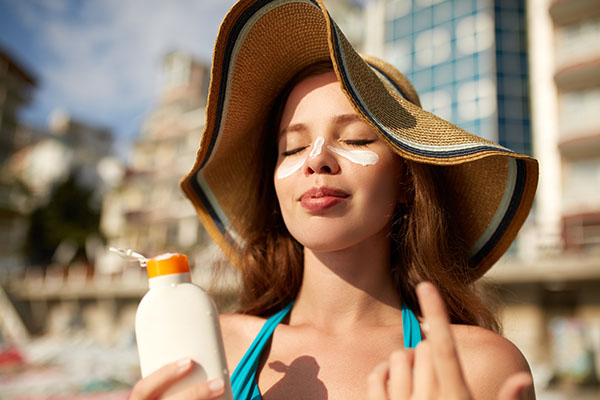
From your heart to your lungs to your brain, you have many organs in your body. One organ — which you might not realize is an organ — is
your skin. In fact, it's the largest organ in your body, and it has the important function of protecting your body from chemicals, bacteria and temperature.
While the skin's primary role is to protect you, it also needs protection, particularly from ultraviolet (UV) light. UV light can damage your skin cells, which can lead to skin cancer.

While you might slather on some sunscreen at the beach and by the pool, there's a lot more you should be doing to
protect your skin from the sun. Here are five ways to protect your skin just as much as it protects you.
1. Learn about — and pay attention to — the UV index.
"The sun is the main source of ultraviolet rays, which can damage your skin and lead to skin cancer," states Sarah Todd, MD, dermatology physician with Chester County Hospital. "The stronger the UV rays are, the more damaging they can be. UV strength depends on a number of factors, from time of day and season to geographical location and the amount of cloud coverage."
Rather than trying to consider all of the factors that can impact UV strength, keep an eye on the UV index. This is a government-run prediction of UV strength each day in each zip code. Most weather apps on your phone display the UV index, and you can also look it up online.
If the UV index is three or higher, take the necessary steps to protect your skin from the sun.
2. Wear sunscreen (and use it properly).
One of the best ways to protect your skin is to use sunscreen. Sunscreen can prevent skin cancer and signs of aging — but only if used properly.
Follow these tips when using sunscreen:
-
Use sunscreen every time you go outside, even on cloudy days and in the winter.
- Choose the right sunscreen. It should have an SPF of 30 or higher, be water-resistant, and provide broad-spectrum protection (meaning it works against UVA and UVB rays).
- Put on sunscreen about 15 minutes before heading outside.
- Use enough sunscreen. For most adults, it takes about an ounce to cover the entire body.
- Use sunscreen on all exposed skin. Remember places like your ears, scalp, and the tops of your feet. Don't forget to use lip balm on your lips (aim for an SPF of 15 or higher).
- Reapply every two hours, after swimming, and after sweating.
3. Use other protection, like clothing and shade.
Sunscreen is highly effective when used properly, but you can also keep your skin safe by using protective clothing and finding shady spots away from the sun.
For clothing, wear garments that covers your arms and legs. You can also put on a wide-brimmed hat that covers your neck, head, ears and face. Finally, use sunglasses to protect your eyes from both UVA and UVB rays.
Shade is also great protection from the sun, especially if you’ll be outdoors for long periods of time.
4. Don't use indoor tanning beds.
It might be tempting to achieve a summer glow in the winter by using indoor tanning beds, but it's very dangerous.
"Indoor tanning — including tanning beds, booths, sunbeds, and sunlamps that are used to make your skin darker — exposes your skin to high levels of UV rays. This can cause skin cancer, not to mention cancers of the eye and cataracts," says Dr. Todd.
Some people think that getting a little tan (or a "base tan") before heading into stronger UV rays, such as on vacation, can protect your skin. However, not only is this not the case, but a base tan (or any tan) is actually a sign of skin damage.
5. Check your skin — and get your skin checked — regularly.
As with all health-related matters, it's important to pay attention to your body, including checking your skin for signs of skin cancer.
At least once a month, check your skin for:
- Growth, spots, or bumps on the skin that are new, expanding, or changing
- Sores that bleed or won’t heal after many weeks
- Scaly or rough red patches
- Growths like look like warts
- Moles that are new or different in size, color, or shape
- Moles that have an odd shape, irregular borders, or areas of different colors
You should also see a dermatologist once a year, who can do a more in-depth review of your skin for any concerns.
Protect Your Skin Year-Round
On sunny days, on cloudy days, when you're in the sun for five minutes, and when you're in the sun for five hours, take the time to protect your skin from UV rays. By using sunscreen, opting for the shade, wearing protective clothing and getting regular skin checks, you can keep your skin healthy and add years to your life.
Have questions about skin cancer, or want to schedule your annual skin exam? Make an appointment with a Chester County Hospital Dermatologist by visiting the Find a Doctor section of our website.